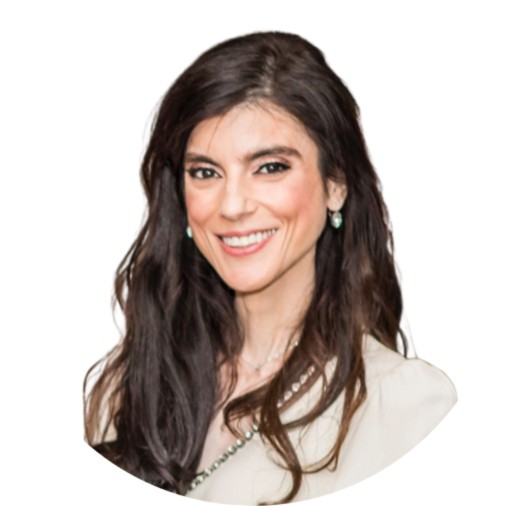Author
Reviewer
Share Article
That Unrelenting and Nagging Itch

| Author | Reviewer |
|
Christine Palmay, MD, CCFP, FCFP Midtown Health and Wellness Clinic Toronto, ON |
Charles W. Lynde, MD, FRCPC, DABD, FCDA Chief Medical Director, The Lynde Institute for Dermatology & Lynderm Research Inc. Associate Professor, Department of Medicine, Division of Dermatology, University of Toronto Toronto, ON |
Chronic Spontaneous Urticaria/Chronic Idiopathic Urticaria, commonly known as hives, is defined when the urticaria like rash/associated symptoms last for more than 6 weeks. While most people (up to 20%) can develop short-episodes, approximately 1% of the population suffer from long-term symptoms. Females are more affected than males. The cause is often not identifiable irritates patients as much as the rash itself! Furthermore, while often deemed trivial, we need to appreciate that CSU adversely affects a patient’s quality of life including sleep disruption and psychological distress.
When searching for those rare triggers, consider:
- Physical Triggers (dermatographism/dermographism, pressure, temperature changes, water exposure, exercises, solar, vibratory)
- Medication Triggers (ACE inhibitors being top of mind)
- Contact Triggers (latex, metals)
- Stress Triggers (COVID proving to be truly significant during the past 3 years)
Finding that golden ticket is truly a gift and a source of relief to patients, but as mentioned, CSU is generally idiopathic in nature. As such, patient expectations need to be set.
Doc, I want an allergy test!
 Patients want answers (as do we). Most chronic urticaria cases do not warrant referral, however in cases of lack of response to medications (more to come), or red flag symptoms (constitutional symptoms, presence of angioedema or suggestion of anaphylaxis such as syncope, bronchospasm) consider reaching out to our allergy or dermatology colleagues for further assessment.
Patients want answers (as do we). Most chronic urticaria cases do not warrant referral, however in cases of lack of response to medications (more to come), or red flag symptoms (constitutional symptoms, presence of angioedema or suggestion of anaphylaxis such as syncope, bronchospasm) consider reaching out to our allergy or dermatology colleagues for further assessment.
What can I do at home?
Encourage patients to keep a diary of symptoms to determine if in fact, triggers exist. Ensure that patients also disclose a comprehensive medication list, both OTC and prescriptions.  Finally, steer them away from overuse or misuse of OTC quick to access options. First generation antihistamines come with a myriad of safety concerns, including drowsiness, and cognitive impairment.
Finally, steer them away from overuse or misuse of OTC quick to access options. First generation antihistamines come with a myriad of safety concerns, including drowsiness, and cognitive impairment.
Pharmacotherapy options
The mainstay of treatment includes second generation H1 antihistamines, often at higher than usual doses (up to 4 times standard doses). From a practical perspective, ensure that you notify the pharmacist that you are intentionally increasing dosing beyond the product monograph, to minimize callbacks/queries.
Starting doses for second generation antihistamine include:
- cetirizine 10 mg
- desloratadine 5 mg- fexofenadine 120 mg
- loratadine 10 mg
- rupatadine 10 mg
- bilastine 20mg
 Guidelines stipulate that early up-titration should be done early in treatment to ensure adequate suppression, but regular follow-up in essential to monitor for progress, side effects and tolerability. In the case of newer prescription agents (rupatadine and bilastine), studies have shown improved tolerability, less drug interaction potential and as such an overall improved safety profile. Remember to ask patients what they are using as self-treatment and strongly steer them away from overuse of first generation antihistamines that are so readily accessible. Safer and more effective options exist!
Guidelines stipulate that early up-titration should be done early in treatment to ensure adequate suppression, but regular follow-up in essential to monitor for progress, side effects and tolerability. In the case of newer prescription agents (rupatadine and bilastine), studies have shown improved tolerability, less drug interaction potential and as such an overall improved safety profile. Remember to ask patients what they are using as self-treatment and strongly steer them away from overuse of first generation antihistamines that are so readily accessible. Safer and more effective options exist!
![]() What is the impact of allergic rhinitis on my patients’ quality of life?
What is the impact of allergic rhinitis on my patients’ quality of life?
What about a steroid blast?
Short courses of systemic glucocorticoids to control severe exacerbations may be needed, but be warned of repeated bursts of steroids and the risks involved. As mentioned, referral to an allergist or dermatologist may be needed in cases of ongoing failure of treatment to avoid the repeated use of steroids. For these stubborn cases, patients may be considered for other therapies, such as Omalizumab (a biologic).
I encourage our readership to challenge themselves with the concept of up dosing our antihistamines and hopefully reaching an itch-free quality of life for our patients. Let’s reserve the hives for the bees!
Continuing learning with CCRN webcasts and podcasts:
![]() Are you equipped to protect high-risk populations from COVID-19?
Are you equipped to protect high-risk populations from COVID-19?
![]() Are you prepared to identify and safeguard high-risk patients from osteoporosis-related fractures? - ACCREDITED PODCAST
Are you prepared to identify and safeguard high-risk patients from osteoporosis-related fractures? - ACCREDITED PODCAST
![]() Are you equipped to identify and treat high-risk patients with osteoporosis for long-term management? - ACCREDITED PODCAST
Are you equipped to identify and treat high-risk patients with osteoporosis for long-term management? - ACCREDITED PODCAST
The development of this blog was overseen by the Canadian Collaborative Research Network and was supported through an educational grant from Aralez Pharmaceuticals Canada Inc.
copyright © 2025 CCRN
Any views expressed above are the author's own and do not necessarily reflect the views of CCRN.

